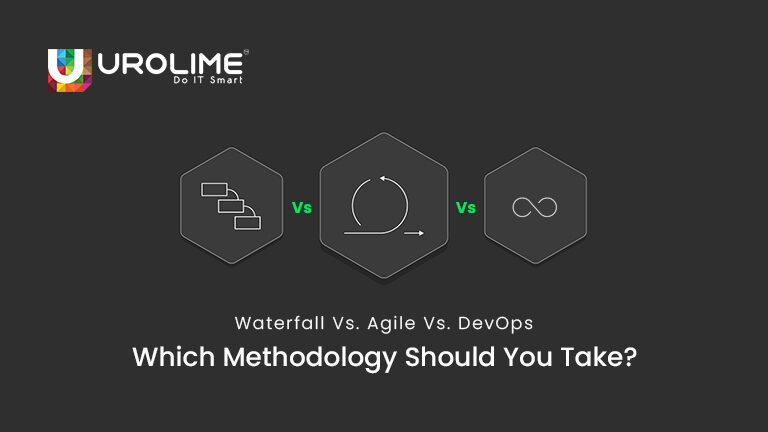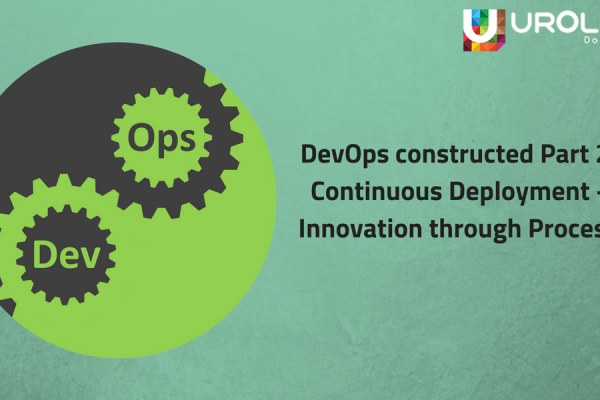Software development is vital for businesses as well as end-users. Both want software development to take place in a faster manner. For businesses, there are umpteen reasons to scale up their software development such as considering competitive market size and surging demand for software development. Like everything else, the production methodology of software development has also undergone many changes and it is up to the organization or IT company to select the production methodology.
Before selecting a methodology, they must weigh the pros and cons of it with regard to their scope of software development and the nature of the project. So far there exists three SDLC models: Waterfall, Agile and DevOps.
Waterfall Model
Waterfall model is a traditional approach to software development used by companies all over the world. As the name suggests, the software development takes place here linearly; one after another. All phases of software development such as planning, analysis, design, coding, testing and operations are carried out one after another. In this approach, the idea of software development is that there are a number of phases that must each be completed before the process can move on to the next phase. The deliverable of products and features is predefined to carry out product development as planned. Different types of waterfall models exist. For example, Boyre-Moore.
Pros and cons of waterfall model
The conventional wisdom of planning software development projects using the widely cited waterfall model is not devoid of flaws. The end goal of software development has to be clearly defined before commencing software development. Adding features cannot be executed after deploying the software. If one wants to add, the entire cycle from planning to testing has to be carried out. As a result, it is unrealistic омг to follow the waterfall model if the end goal is not constant. Besides, a collaboration between independent teams can be attained if there is well-defined documentation.
The independent nature of the waterfall model implies it is best suited for small scale projects as well as where there is a clear vision about the end result.
Agile
More and more projects use Agile methodology. Many companies opt for this approach because of its infinite scope of adding features as there is no indefinite end goal for the project. It is introduced to prevent the inherent challenges of traditional methods. Quick and frequent delivery is possible in Agile. Likewise, changing technical, financial and strategic concerns can be easily integrated into Agile. It breaks down each phase and brings it together in iterations.
Pros and Cons of Agile
Agile divides software development into separate departments with prompt goals. So, bringing all components and rolling them together is a task that is arduous and time-consuming. Likewise, the unending possibility of deployment makes things worse.
When it comes to merits, the flexibility it offers is incredible. You can incorporate as many changes or features as you want. It also fosters increased collaboration between independent teams. Product delivery will not be affected as there is no need to test and deploy the entire package of bugs. It includes clients at every level of software development, thus reducing the impact of change in requirement in a later stage.
DevOps
DevOps is a software development approach that has gained popularity and momentum all over the globe compared to Waterfall and Agile development. Every DevOps consulting company is helping many IT firms to carry out software development. The term DevOps stands for development and operation, indicating the two sections of software development. The term DevOps was coined over time, as people looked for better ways for developers and operations to work together.
Pros and cons of DevOps
DevOps is flexible, collaborative and automotive because of the continuous CI/CD pipeline. DevOps shows sturdy and effective software development methods, but the base of the development successes lies in the DevOps engineers. The efficiency of DevOps depends on human ability.
In essence
Software development practices and methodologies vary. Having a better understanding of the pros and cons of each helps you select the best one suited for your requirements. There are many things to weigh when it comes to selecting a production methodology. Quality and agility along with little time and effort are the primary driving factors in selecting a methodology for software development So that companies can deliver products in a swift manner within budget.
![]()






